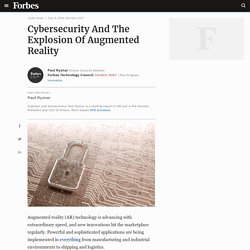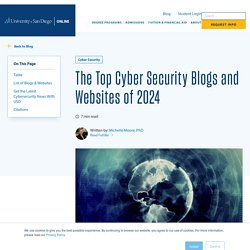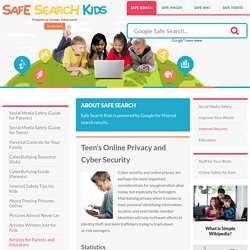Zoom
Trash

On cybersecurity, educational institutions have a people problem. For decades, bad actors have exploited computer systems by finding vulnerabilities in the systems themselves, but now, in a vast world of connected devices, users have become the soft underbelly of each organization, especially in educational communities.

The dichotomy of maintaining network security while also preserving communication and the free exchange of information — a keystone of educational philosophy — has presented IT leaders with a unique obstacle. Meanwhile, challenges such as IT talent shortages and insufficient funding for cybersecurity projects have educational institutions searching for solutions to secure their environments in the face of new risks.
“It has become much more evident that [cybersecurity] is something that they have to move forward on,” said Amelia Vance, director of education privacy for the Future of Privacy Forum, a think tank based in Washington D.C. Cybersecurity And The Explosion Of Augmented Reality. Augmented reality (AR) technology is advancing with extraordinary speed, and new innovations hit the marketplace regularly.

Powerful and sophisticated applications are being implemented in everything from manufacturing and industrial environments to shipping and logistics. While AR advances are unquestionably exciting, the industry is now grappling with a whole constellation of complexities. The adoption of AR brings an expanding landscape of new cybersecurity vulnerabilities. Consumers and businesses are grappling with big data breaches, and implementing effective cybersecurity measures is an essential necessity for modern businesses. Cybersecurity measures are one of the first things AR solutions providers consider when developing new tech. Innovation Outpacing Preparation Setting The Standard Wearable and tablet-based AR almost always requires Wi-Fi, which carries significant security risks. The Top Cyber Security Blogs and Websites of 2020. If you work in the cybersecurity industry or are interested in pursuing a career in this vitally important field, it’s important to stay up to date on the latest trends and advancements.

Must-Read Cyber Security Blogs 1. Daniel Miessler @DanielMiessler An experienced cybersecurity expert, consultant and writer, Miessler takes a personal approach on his blog — greeting visitors with the words: “My name is Daniel Miessler… I explore the interesting and beautiful at the intersection of security, technology, and humans.” 2. @gcluley A longtime industry expert who held senior roles with Sophos and McAfee before deciding to begin “working for myself” in 2013, one could say Graham Cluley is totally clued in to the cybersecurity scene — running a blog with an open, accessible style while continuing his work as a conference speaker, media pundit, podcaster and consultant. 3. @IT_SecGuru IT Security is a daily news digest of breaking news in the IT security industry. 4.
@securityweekly 5. 6. 7. 8. 9. Cybersecurity: Crash Course Computer Science #31. How it Works: Cybersecurity. A Guide to Cybersecurity for K-12 Schools. What is cybersecurity?

Cybersecurity is the act of protecting your network and systems from digital attacks aimed at accessing and compromising sensitive data and disrupting normal operations. The primary goal of an effective cybersecurity solution is to protect your network from outside intrusion and ensure the confidentiality and availability of your information as well as provide a defense against issues such as hardware and software failure and power outages. Why is cybersecurity so important for schools? Virtually no industry is safe, but K-12 schools are especially vulnerable to cybersecurity attacks, with the education vertical as a whole absorbing ~23% of all Ransomware attacks according to a recent study by Kasperksy. According to recent data breach reports, the education sector ranked sixth overall in the US for the total number of reported “security incidents” this past year. It's Time To Solve K-12's Cybersecurity Crisis.
2019 Year in Review – The K-12 Cybersecurity Resource Center. Schools are increasingly relying on technology for teaching, learning, and school operations. What do we know about the cybersecurity risks they are facing? What can leaders do to mitigate or reduce those risks? Credit: Jason Kravitz CC BY 4.0 The definitive report on cyber incidents affecting U.S. public elementary and secondary (K-12) education institutions during 2019: An abridged PDF version of the report is also available for direct download here.
Suggested citation: Levin, Douglas A. (2020). The publication of this report was made possible with the generous support of Technology Resource Advisors, ManagedMethods, PC Matic PRO, and Gradient Cyber. Champion Sponsor: Defender Sponsors: Teen’s Online Privacy and Cyber Security - Safe Search Kids. Cyber security and online privacy are perhaps the most important considerations for any generation alive today, but especially for teenagers.

Maintaining privacy when it comes to their personal identifying information, location and even family member identities will help to thwart efforts at identity theft and even traffickers trying to track down at-risk teenagers. Statistics According to Stay Safe Online, 1/3 of a child’s life is spent online, 77% of children go to online school and 94% of teens do online research. Furthermore, 91% of 18-24 year-olds say they network online with people they don’t really know. 46% of the same age group uses file-sharing apps that offer access to their personal PCs and files. The most common password used in America is “password,” so further education on the importance of maintaining cybersecurity should be the number one goal of parents and teachers.
Personal safety isn’t the only thing at risk, either. It Starts At Home Talking Points. What teenagers need to know about cybersecurity. Now that school is back in session, many high schoolers have new phones, new computers and new privileges for using their devices – and new responsibilities too.

High schoolers today are more technology-savvy than average adults. While many people think that young people use their devices primarily for video games and social networking, the reality today is that high schoolers use technology for learning as much as for entertainment. As the director for cybersecurity programs in the University at Albany’s School of Business, I regularly encounter high school students through the camps I run or as interns in my research lab. My first task is to describe the potential threats for them.